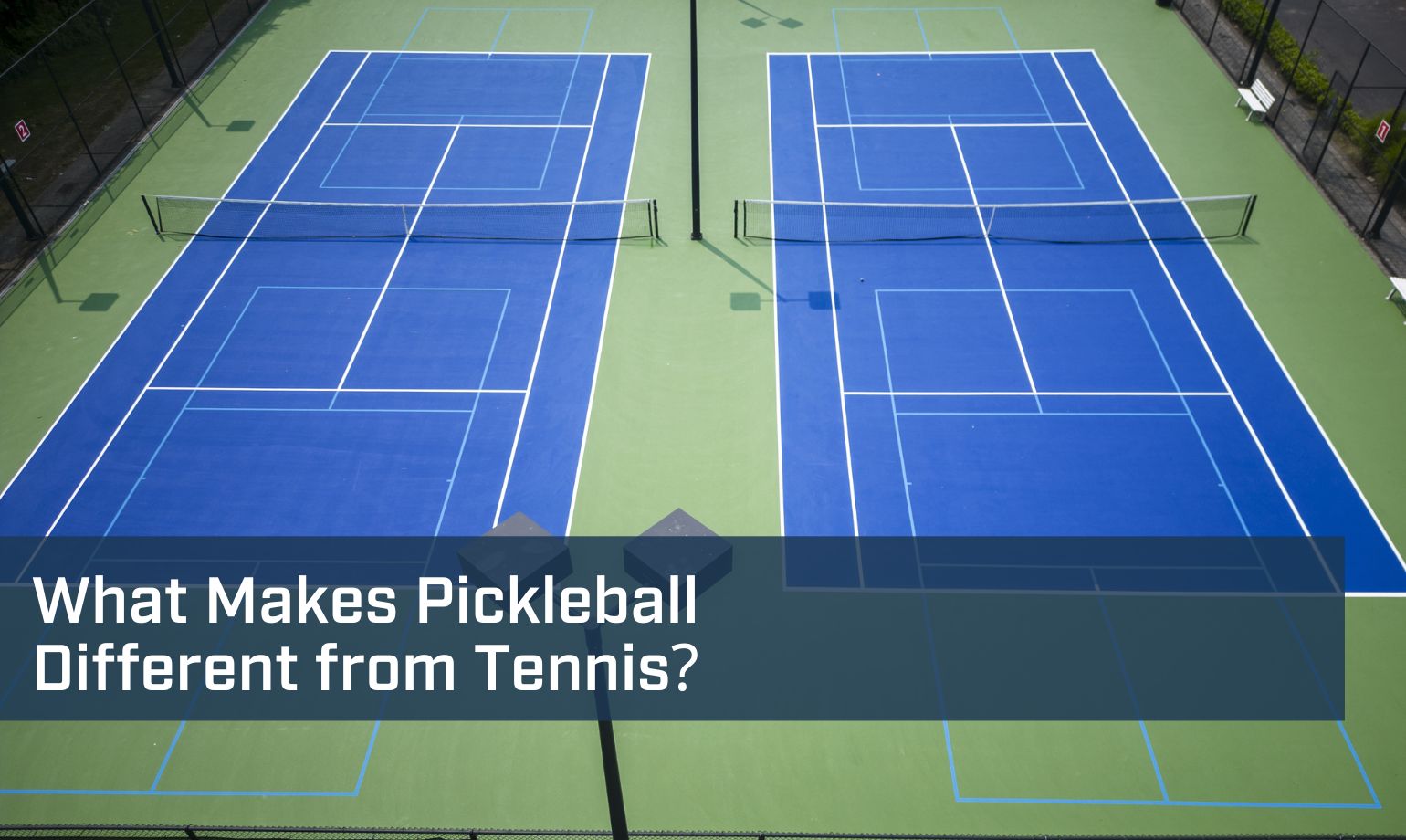
What Makes Pickleball Different from Tennis
It’s no coincidence that pickleball somewhat resembles tennis to the outside observer. The inventors of pickleball incorporated elements of several racket or paddle sports in their thrilling new game, including tennis, ping pong, and badminton. If you’ve ever found yourself mulling over the differences, you’re not alone. Pickleball and tennis certainly share similarities, but they also have distinct characteristics that set them apart. So exactly what does pickleball borrow from its older cousin, tennis, and what unique features make it different?
Court Dimensions and Layout
The difference most people immediately notice between pickleball and tennis is the court size. A standard pickleball court measures 20 feet by 44 feet for either singles or doubles play. In contrast, a tennis court is significantly larger, measuring 78 feet long and 27 feet wide for singles matches, expanding to 36 feet for doubles. This size disparity means pickleball requires less running, making it accessible to a broader range of players.
Additionally, pickleball courts feature a unique area known as the “kitchen” or non-volley zone, which extends seven feet from the net on both sides. Players are not permitted to volley — hit the ball out of the air — while standing in this zone, adding a strategic element to the game. Tennis courts lack this specific area, allowing players to volley from anywhere on the court.
Equipment Variations
The equipment used in each sport also highlights their differences. Pickleball paddles are typically made from high-tech composite materials and have a solid, flat surface, somewhat like an extra-large, extra fancy ping-pong paddle. Pickleball paddles are notably smaller and lighter than tennis rackets, which are larger, longer, and strung with synthetic or natural gut materials. This design difference influences the style of play, with pickleball relying more on control and placement, while tennis places a greater emphasis on power and spin.
Another distinguishing factor is the balls used for each sport. Pickleballs are plastic, perforated with holes, somewhat like a whiffle ball, and have a diameter between 2.875 and 3 inches. They weigh between 0.8 and 1.02 ounces. Tennis balls are slightly larger, covered in fibrous felt, and pressurized to create bounce. These differences greatly affect how the balls travel and respond during play.
Net Height and Positioning
Net height is also slightly different. In pickleball, the net is hung at 36 inches on the sidelines and 34 inches in the middle. Tennis nets are two inches higher in the center, standing 3 feet (36 inches) exactly. This subtle difference influences the trajectory and style of shots players use in each sport.
Gameplay and Scoring
When it comes to gameplay, pickleball and tennis have distinct rules and scoring systems. In tennis, players can serve overhand or underhand, and points can be won by either player or team regardless of who served. The scoring system progresses in set increments (15, 30, 40), and matches can be lengthy, especially with extended deuce tiebreakers. Games are typically played as best-of-three or best-of-five sets.
Pickleball, on the other hand, requires players to serve underhand, and only the serving team can score points. Each point is counted as one, and games are played to 11 points, with a win margin of two points. Matches usually consist of the best two out of three games. This straightforward scoring system contributes to the fast-paced nature of pickleball.
Physical Demands and Accessibility
While both sports offer excellent cardiovascular workouts, the physical demands differ. Tennis requires more sprinting and utilizes heavier balls, leading to a more intense physical exertion. Pickleball, with its smaller court and lighter ball, emphasizes quick reflexes and strategic play, making it accessible to a broader range of players at different age and skill levels.
Community and Culture
The culture surrounding each sport is also unique. Tennis has long been associated with a more traditional and sometimes exclusive atmosphere, often linked to wealth and privilege. Pickleball, however, is celebrated for its inclusive and community-oriented environment. Players commonly praise the sport’s ability to bring together individuals of all ages and socioeconomic classes, fostering social connections and a warm sense of community.
More Different Than Alike
While pickleball and tennis share certain similarities, their differences are significant, influencing how each game is played and enjoyed. From court size and equipment to gameplay and culture, pickleball offers a unique experience that has contributed to its rapid growth and popularity. Whether you’re a seasoned tennis player or new to racket sports, exploring pickleball can provide a fresh and enjoyable challenge.
